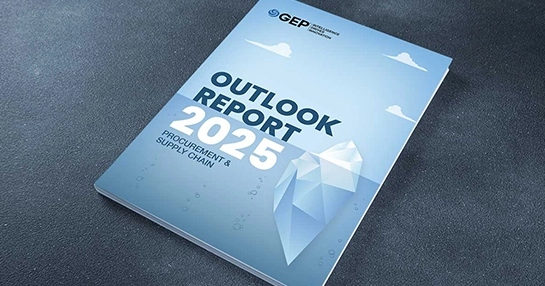
Not Sure Who’s The Right IT Vendor? Use Agentic AI to Find One
- Agentic AI connects your data and systems and turns vendor selection into a smarter, faster process.
- It keeps humans in charge while learning from outcomes to improve decisions over time.
- Pairing it with supplier management software ensures insights and actions flow together to create real value.
November 13, 2025 | Procurement Software 6 minutes read
If choosing IT vendors feels a bit like speed-dating with long-term consequences, you’re not imagining it. Everyone shows up with a polished pitch and a glossy roadmap, but what really matters is what happens after the deal is signed. That’s where the headaches show up: technical debt, surprise costs, missed SLAs, compliance issues.
Agentic AI can help overcome these challenges in IT vendor selection. Instead of leaving you buried in dashboards and spreadsheets, these systems actually act. They pull in signals from across your ecosystem, weigh trade-offs, and recommend next steps: learning and improving as they go. Your team still sets the strategy, but the AI takes care of the heavy lifting, helping you prioritize vendors who can deliver real value, not just the best sales pitch.
Ready to Leverage Agentic AI in procurement operations?
Explore how GEP’s AI-powered solutions can help
Introduction to Agentic AI in IT Vendor Selection
Agentic AI is autonomous, goal-driven software that can plan, execute, and adapt within constraints you define. Think of it as the difference between a spreadsheet macro and a sharp colleague who knows your objectives, watches the field, and nudges the process forward: every hour of every day.
IT Vendor Selection
Today’s process is often fragile because it’s:
Siloed
Security, finance, and architecture evaluate in parallel, so insights arrive late or conflict.
Static
A snapshot RFP tries to predict years of performance from a few weeks of answers.
Human-limited
No team can continuously monitor thousands of risk and performance signals across vendors.
The result? Good intentions, thin evidence. That’s the soil where vendor evaluation gaps and technical debt sprout.
Significance of Agentic AI in IT Procurement
Agentic AI turns things around by:
Encoding intent
It operationalizes your principles (cost discipline, “cloud-first,” regulatory compliance, ESG) as machine-enforceable policies.
Closing the loop
It compares predicted value with actual outcomes and adjusts scoring over time.
Acting early
It spots weak signals (license under-utilization, SLA drift, security posture changes) and proposes interventions before pain hits.
When you’re selecting an agentic AI approach, the “right agentic AI” is the one that learns from your outcomes faster than your environment can change.
What Agentic AI Does in Vendor Selection
Think of Agentic AI as a sharp teammate that plugs into all the messy systems you already use and helps you make better vendor calls without the headaches. Here’s what it does:
1. Connects the dots
Instead of juggling data from ERP, contracts, IT tickets, security logs, or cloud spend dashboards, the AI pulls it all together. No ripping out systems, just layering intelligence on top of what you’ve already got.
2. Shows up where you work
You don’t have to go to some new portal. The AI’s recommendations—like flagging a risk or updating a supplier score—pop right inside your sourcing or supplier management tools.
3. Keeps the guardrails on
It’s not a free-for-all. Access is role-based, policies can differ by region, and humans still make the final calls on big decisions like vendor awards.
4. Explains itself
No black box. If the AI flags Vendor A over Vendor B, you see why—maybe their SLA track record is better, or their contract terms have fewer risks. It gives plain-language rationales, so everyone stays on the same page.
5. Learns as it goes
After you pick a vendor, the AI keeps watching. If what looked great on paper doesn’t pan out, it factors that into the next cycle. Over time, it gets sharper at knowing what “good” looks like for your business.
6. Stays on top of things
Selection isn’t a one-and-done. The AI nudges you when it’s time to renegotiate, cut unused licenses, or rethink a vendor after a regulatory change. It’s like a calendar, analyst, and risk radar rolled into one.
Eager to Learn More on Agentic AI?
Get The Agentic AI Playbook to see how leaders are moving from automation to autonomy
How Agentic AI Integrates with IT Vendor Selection
Agentic AI doesn’t ask you to rip out your existing stack. Instead, it weaves itself in. Think of it as a smart layer that sits across the tools you already use.
First, it plugs into your “data backbone.” That’s all the usual suspects: ERP for spend, CLM for contracts, ITSM for incidents, CI/CD for change rates, SIEM for security, and FinOps for cloud costs. Instead of you stitching all that data together manually, the AI does it for you.
Then, it shows up where your team already works. So, when you’re inside your sourcing or supplier management software, the AI is there—nudging scores up or down, flagging risks, or surfacing contract gaps. No extra tabs, no hunting through dashboards.
Of course, it plays by the rules. Access is still role-based, policies can differ by region or business unit, and the big calls (like awarding a deal) still go through humans. The AI helps stage good judgment, not override it.
Finally, it’s always learning. Every recommendation it makes, it watches what happens after. Did that vendor deliver? Did the risk pan out? Over time, it figures out what “good” looks like for your business specifically—and gets sharper with each cycle.
Explore how this pairs with GEP’s Supplier Management Software to orchestrate supplier data, performance, and corrective actions in one place.
How Agentic AI Goes About IT Vendor Selection
1. Starts with clear intent
The AI needs to know what you’re looking for. Are you chasing faster time-to-value? Lower total cost? Stronger SLAs? Or minimizing risk exposure? You also define the hard “no-go” zones—compliance rules, encryption standards, or zero-trust requirements. That’s the baseline it won’t cross.
2. Orchestrates the tools
The agent brings together different AI capabilities: forecasting demand, detecting anomalies, explaining vendor scores in plain language, even scanning contracts for gaps. Instead of a jumble of separate tools, it acts as the conductor making them play together.
3. Keeps decisions explainable
No black-box magic. When Vendor A edges out Vendor B, you can see why—maybe it’s SLA reliability, maybe it’s contract flexibility. AI gives rationales that stakeholders can understand and debate.
4. Learns after go-live
Selection isn’t the finish line—it’s the starting gun. The agent keeps tracking: Did the vendor deliver what was promised? Where did things fall short? Then it folds those lessons back into the next round, so the process gets sharper over time.
5. Nudges, not nags
It’s not constantly buzzing your inbox. Instead, you get timely nudges: “This renewal is coming up—worth renegotiating,” or “License usage looks off—time to right-size.” It’s proactive without being overwhelming.
Challenges and Considerations While Integrating Agentic AI in Vendor Selection
Bringing Agentic AI into vendor selection isn’t just about plugging in a new tool—it’s about rethinking how the operating model works. Here are a few things to get right:
1. Data readiness
AI is only as good as the data it sees. That means mapping your sources, defining a single version of the truth, and eliminating those “shadow” spreadsheets. Without a clean foundation, the agent risks making confident but wrong calls.
2. Policy into practice
Principles need to be translated into machine-readable rules. At the same time, you need clear human override paths—with full logging—for when nuance matters.
3. Building trust and ethics
Transparency is key. Document how vendor scores are generated, avoid hidden bias, and give stakeholders clear “why” explanations behind every recommendation.
4. Managing the change
This isn’t just a tech upgrade, it’s a shift in how decisions get made. Instead of long committee reviews, AI speeds things up. The AI suggests the best option, the category lead decides, InfoSec and Legal give their approval, and Finance makes sure the numbers add up.
5. Start small, then scale
Begin with one category (say, observability tools) in one region. Prove the value loop, build confidence, and expand step by step.
Choose the Right Vendor
The old way of picking vendors with long RFPs and flashy demos no longer keeps up with constant change and risk.
Agentic AI connects your data, makes sense of signals, and guides the next best step while keeping humans in control. Done right, it reduces technical debt, improves reliability, and makes spending smarter instead of just smaller.
If you are exploring Agentic AI, ground it in your principles, connect it to your core data, and measure it by real outcomes. Pairing it with supplier lifecycle tools like GEP’s Supplier Management Software keeps insights and actions in one flow where value is created.



